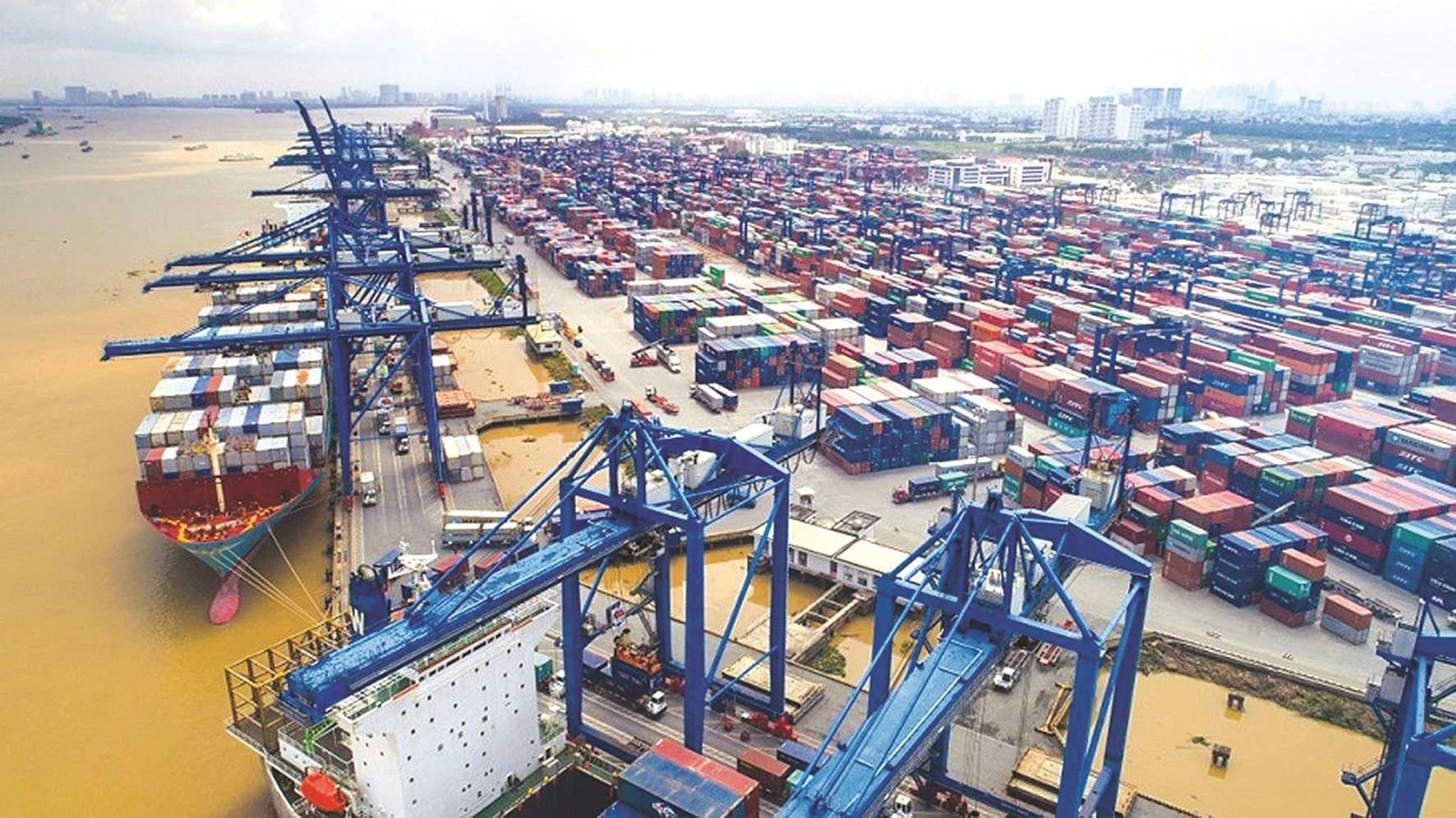Ho Chi Minh City: Partnering with Businesses in the Carbon Market
(TN&MT) - Ho Chi Minh City recommends and collaborates with ministries and departments to complete mechanisms and policies related to the carbon credit market; enhances training and workshops for businesses to conduct greenhouse gas (GHG) inventories; and supports technological innovation to reduce emissions in production.
Hoping for the policy to be completed soon
Ho Chi Minh City has great potential to develop the carbon credit market due to the presence of many greenhouse gas-emitting businesses with a need to reduce emissions. According to Decision No. 01/2022 of the Prime Minister, Ho Chi Minh City has 140 large emitting enterprises that must conduct GHG inventories. As per the Ministry of Natural Resources and Environment's requirements, Ho Chi Minh City has reviewed and added 131 more enterprises that will need to perform GHG inventories.

Saigon Newport Corporation - one of the entities required to conduct greenhouse gas inventories
Mr. Nguyễn Võ Trường An, Deputy General Director of ASEAN Carbon Credit Trading Joint Stock Company (CTTPA), stated that the company has signed cooperation agreements with 30 enterprises in Ho Chi Minh City that are required to conduct GHG inventories. These enterprises mainly operate in the fields of steel, textiles, and fertilizers and are subject to the Carbon Border Adjustment Mechanism (CBAM) when exporting goods to Europe. The businesses are seeking solutions to reduce emissions and gradually develop carbon projects.
According to Mr. An, CTTPA has organized a series of greenhouse gas inventory training courses from basic to advanced levels at a low cost for these enterprises. Additionally, they are piloting the use of an automated greenhouse gas inventory technology platform to monitor the emissions process of several companies. Besides domestic enterprises, CTTPA is also cooperating with 10 foreign direct investment (FDI) companies to develop carbon credit projects in Vietnam.
However, the leader of CTTPA believes that this collaboration is just the initial steps towards establishing a complete carbon market in Ho Chi Minh City specifically and nationwide in general.
"Manufacturing enterprises and intermediaries like CTTPA earnestly hope that the Government, ministries, and local authorities will soon finalize the system of policies and regulations related to the carbon market. Furthermore, localities should organize training on greenhouse gas inventory procedures for many enterprises in need, as the deadline for submitting inventory reports by Q1/2025 is approaching rapidly," suggested Mr. Nguyen Vo Truong An.
Meanwhile, Mr. Nguyen Trong Minh, Director of Grac Technology Joint Stock Company, stated that since 2018, the company has been researching and developing Grac software with the ambition of helping cities achieve a "zero" emission target for household solid waste. Through smartphones or tablets, Grac assists government management agencies with comprehensive data for analyzing and planning waste reduction strategies as well as sorting waste at the source.
Currently, 70% of the People's Committees of communes and wards in Ho Chi Minh City have been using Grac software to manage household solid waste in their areas.
“However, the fees that localities pay to the company are not enough to cover the investment and operational costs of the software. To continue expanding Grac software to more localities, we are calling for investment from investment funds and businesses both domestically and internationally. I hope that Ho Chi Minh City and other provinces and cities will have a fund to financially support businesses when investing in low-carbon projects,” Mr. Nguyen Trong Minh expressed.
Supporting Businesses
From the perspective of the state management agency, Mr. Nguyen Toan Thang, Director of the Ho Chi Minh City Department of Natural Resources and Environment, stated: “Currently, we lack detailed legal frameworks for calculating, evaluating, and verifying carbon credits; we lack a widespread and effective trading environment, especially in connecting with international markets where credits can be sold at high prices...
“These challenges are being actively addressed by the Government and the People's Committee of Ho Chi Minh City, coordinating with various departments and ministries. This resolution is not only for Ho Chi Minh City but also for other localities across the country" - Mr. Nguyen Toan Thang said.
Currently, the Department of Natural Resources and Environment is coordinating with the Department of Finance to complete the Pilot Mechanism for Financial Implementation of Greenhouse Gas Emission Reduction Measures through Carbon Credit Exchange and Offset Mechanisms, and to submit it for approval by the City People's Committee. At the same time, they are coordinating with the Ministries of Industry and Trade, Transport, Agriculture and Rural Development, and Natural Resources and Environment to determine the contribution rate for emission reductions and greenhouse gas absorption in the city for the national emission reduction targets before trading carbon credits.
In addition, the Department of Natural Resources and Environment and the Department of Finance will coordinate with the Ministry of Natural Resources and Environment to calculate the price and select the sale of carbon credits for pilot projects. They will also collaborate with relevant departments and sectors to prepare for the operation of the carbon credit trading platform, ready for trial operation in 2025 and official operation from 2028 according to the set roadmap.
Director of the Department of Natural Resources and Environment, Mr. Nguyen Toan Thang, informed that in the near future, Ho Chi Minh City will enhance training and capacity building for businesses, organizations, and the team of civil servants on greenhouse gas inventory, carbon credit market operations. The city will also support businesses in the post-inventory phase: assisting with technological innovation to reduce emissions and building projects to generate carbon credits.

 Home
Home




